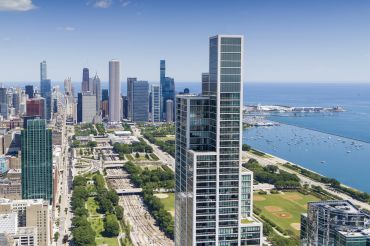When we look at the investment sales market in New York City and try to determine where the market is headed, we look at the volume of sales (by total dollars and number of building sales) as well as property values. Market activity shows volume metrics have been declining since the beginning of 2016 and property values have been falling in Manhattan while continuing to rise in the outer boroughs.
Drilling down into the value metrics, it is important to look at various product types and determine how each is performing as they follow very different trends. Those that are normally the first to turn in a transitioning market, such as land and hotels, have been under the most stress while others have been trying to find their footing. It is clear, however, that the multifamily sector in New York City is performing better than any other product type.
It is actually quite remarkable how much traction the multifamily market continues to experience given the various obstacles: Legislation has, for the most part, turned against property owners, and the supply of new units has helped to exert downward pressure on property fundamentals.
Moreover, legal proceedings and Rent Guideline Board rulings—as in the case of Roberts and Altman (which I’ll explain in a moment)—have blindsided the industry, overturning years of generally accepted operating procedure, endorsed both by Division of Housing and Community Renewal and New York City Department of Housing Preservation and Development. These decisions have created uncertainty and unknowns for property operators trying to most effectively manage their buildings. The Roberts decision, which determined it was illegal to deregulate units in properties receiving J-51 tax benefits, was made more than seven years ago, on Oct. 11, 2009, and clear guidelines regarding how to administrate vacancies in these properties have still not been determined. The Altman decision, which determined that the rent being paid by the last regulated tenant in possession, was the factor behind high-rent deregulation, also was contradictory to many years of endorsed standard operating procedure, adding yet another layer of complexity to the sector. (Recent court decisions have overturned Altman, resulting in hopeful optimism but uncertainty remains.)
With regard to fundamentals in the multifamily sector, we have seen, for nearly a year now, downward pressure on residential rents. This trend was exacerbated by the significant supply of condo product brought to the market during this cycle. Forty percent of these condominium units have been purchased by investors, effectively adding them to the rental stock.
Notwithstanding these headwinds, the multifamily sector continues to perform relatively strongly when we look at 2016 compared with 2015. It is important to note that in 2015 the Stuyvesant Town-Peter Cooper Village (STPCV) transaction inflated the statistics significantly, so we will present data both with and without the STPCV sale included, which only impacts the elevator segment of the market.
In 2016, there was $13.57 billion of multifamily transaction volume, up 2 percent from the $13.24 billion of activity in 2015 (negative 27 percent if STPCV is included). In the elevator category, there was $8.75 billion of sales activity last year, a 5 percent increase over the $8.37 billion of activity in 2015 (negative 37 percent if STPCV is included). In the walk-up sector, there was $4.82 billion of sales value in 2016, just $48 million below the 2015 total. Even in the Manhattan submarket, where sales volumes were off much more significantly than the citywide averages, the multifamily sector saw the dollar volume of sales increase by 3 percent in 2016 from 2015 (negative 23 percent if STPCV is included).
The number of properties sold in the multifamily sector last year totaled 1,508, a 9 percent drop from the 1,652 properties that traded in 2015 (negative 12 percent if STPCV is included). Elevator properties showed a 19 percent decrease with 275 buildings sold in 2016 versus the 340 properties sold in 2015 (negative 31 percent if STPCV is included). Last year, 1,233 walk-up buildings were sold citywide, a 6 percent drop from the 2015 total.
With regard to property values in the multifamily sector, 2016 saw price appreciation across the board. This was the case for elevator buildings and walk-up buildings in every submarket throughout the city with the exception of elevator properties in northern Manhattan, where property values dropped by 5 percent.
Citywide, multifamily properties had an average sale price of $417 per square foot in 2016, an 11 percent increase over the 2015 average of $374 a foot. Elevated properties rose by 6 percent to a $514 average while walk-up properties increased by 12 percent to $397 per square foot.
Capitalization rates continued to compress citywide as well. Total cap rate compression citywide was 26 basis points down to an average of 4.31 percent. In the elevator sector, the compression was 17 basis points to 3.95 percent and in the walk-up sector, compression was 29 basis points to 4.47 percent. In Manhattan, capitalization rates continued to be extremely low with an average of 3.55 percent in the multifamily sector. Elevator buildings had an average of 3.3 percent and in the walk-up sector the average was 3.71 percent.
In an ordinary year, this performance would not look so great but, given what is happening in other product segments, this performance has been a bright spot for the market. Lenders continue to love the multifamily sector and demand from the investment community remains heavy. It is true that many multifamily investors have simply thrown their hands up in the face of rent freezes and adversarial court decisions, selling their portfolios and purchasing assets outside of New York state, but the void has been filled by new investors desirous of buying apartment buildings in the city. This is helping to prop up the segment, at least for now.


